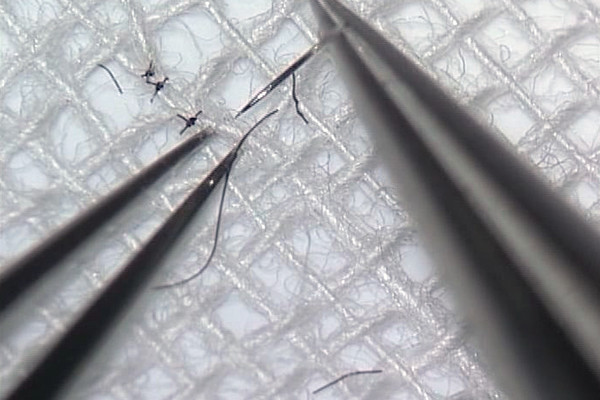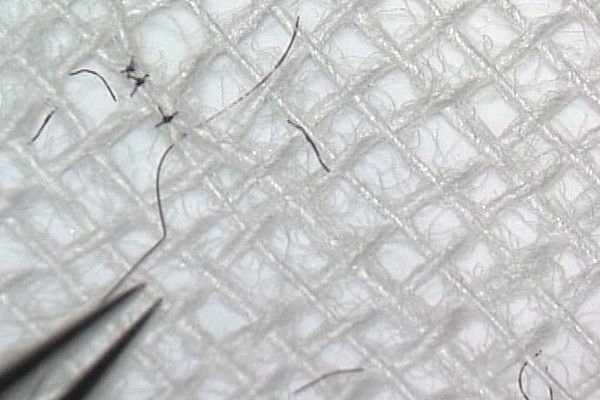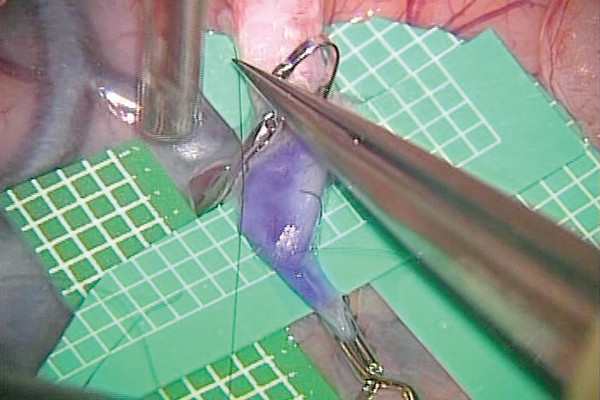For Neurosurgeon, Plastic surgeon
Trainings of Microsurgery

eBook with Online Videos
"The definitive example of private training of Microsurgery."
A book for microsurgery training using an imminent material.
Introducing a method of actual training to prepare for practice.
You can watch training and surgery videos with online.
There are no international borders when it comes to the importance of microsurgical training.
I hope this textbook will help neurosurgeons and plastic surgeons all over the world improve their techniques.
(Masahiro Indo)
Information
- Promotion video uploaded to Youtube
- Available at Amazon.com, iBooks.com, Kobo.com. Or check the above ebook stores of your country.
- Pre-order page appeared on Amazon.de.
- Pre-order page appeared on Amazon.co.jp.
Recommendation
- Recommendation by Mika Niemelä
-
Performing micro(neuro)surgery as such has many elements similar to playing an instrument like the violin or the piano or performing technically demanding professional sports like golf or shooting. Mastering an instrument or sports takes lot of time and practice which typically begins at the latest of 5 years of age whereas in neurosurgery it begins about twenty years later. This is natural as neurosurgery and medicine in general is more than surgical techniques but also diagnostics, indications and empathy. After those basic but also demanding skills can one think about refining their microsurgical techniques for the benefit of the often severely ill patients. Still, in a way we lose many years of training during a time when our young nervous system would be in the best age to learn an adapt the movements necessitated in the OR. To make up the missed time one needs to practice hard and steadily once the decision to become a micro(neuro)surgeon has been made which often is late during the medical school or when graduating. Being technically a good or master neurosurgeon takes talent and motor skills which often are reflected by athletic hobbies or playing an instrument since childhood or young adulthood. When entering the fascinating world of microsurgery one also needs special experimental practice which is very well presented in the "Trainings or Microsurgery" by Masahiro Indo and Kazuo Tsutsumi.
Before the time of videos, DVDs and the internet it was necessary for neurosurgeons and surgeons to travel to see surgeries performed by masters to learn more. However, now books with videos can be bought even online to make learning easier without always needing to travel long distances to learn. As nobody wants to become a bad microsurgeon we have an inborn need to develop our skills to perfection starting from the basics and going to the tricks which are very well presented in this book. It begins with introducing on how to hold the instruments with illustrated pictures going into hands and poster, the order of training with details and even mental attitude which is of utmost importance. Learning microsurgical techniques is a lifelong process and we can learn to be better till the end of our careers which continue longer and longer. To stay healthy in order to be perform well we must not forget to take care of our physical and medical wellbeing during our hectic and demanding careers.
I cordially recommend this ebook to all neurosurgeons and microsurgeons in general at different stages of their career either to build or refine their microsurgical techniques - there is no doubt that we all become better after studying this ebook in detail.
Mika Niemelä MD, PhD, IFAANS
Professor of Neurosurgery Helsinki University, Finland
Chairman of Neurosurgery Helsinki University Hospital, Finland
Preface
- TRAININGS OF MICROSURGERY For young neurosurgeons and plastic surgeons (Masahiro Indo, MD, PhD)
-
Every time I watch a professional European football game on the television, or listen to the music of a professional violinist, I reflect on why they are able to be outstanding despite their strict environment. The reason is that they are professionals. Their ability to perform is accomplished by strict training, extensive experience, and a spirit of self-advancement. It is in this sense that I want to think about the operation skills of neurosurgeons.
Needless to say, neurosurgery is not a professional sport; however, the professional spirit should be common to us. Operative results are determined by judgment, which is based on experience, and microsurgical technique. In terms of operative judgment, young neurosurgeons usually lack the experience of senior neurosurgeons because they have only performed a few operations. So, we try to compensate for this difference by studying videos and learning from how experienced neurosurgeons perform in operations. Nevertheless, it is difficult to achieve the same level of experience in a short period of time. However, the situation is different for microsurgical technique. Even we young neurosurgeons are able to develop sophisticated skills by training for microsurgery, often enabling us to exceed the skills of experienced neurosurgeons. Furthermore, such training is more advantageous to young neurosurgeons than old neurosurgeons, because their body and mentality are more malleable. If microsurgery training is started early, and practiced every day, we can improve our technique to catch up with or surpass that of our senior colleagues.
Microsurgical technique involves the maneuvering of micro-scissors, forceps, and sutures during anastomosis, and the fine handling of instruments that are required to open Sylvian fissure or detach perforators and so on. If we can perform these with stability in training, when we have the opportunity to operate under supervision we can do so without tremor and can handle instruments accurately in spite of our poor experience. I think that this is also a good thing for the supervising surgeon, because it can reduce their anxiety about the possibility of an accident occurring during the operation, such as perforation of an artery, tremor, missed-suturing, and so on.
I have written this textbook despite the fact that I am a young neurosurgeon. The reason for this is simple: I can sympathize with the novice operator’s feelings. Furthermore, I felt that it is very important to know the importance of training and to understand how to train correctly. Of course, this textbook is neither absolute nor definitive, it is just one method. If you have access to better training, you should continue with your current practice.
The most important thing is to continue training almost every day. Continuing is essential, and training intermittently is not effective for improving microsurgical technique. Just like eating every day, training almost every day is the most important thing, even if your schedule only allows training for short periods of time. This is not easy. Indeed, training is not usually interesting and can be tough, without immediate benefits. I had to train hardest to stand out from other neurosurgeons, if I am not allowed do anything other than training, before performing actual surgery.
Furthermore, it was not “training” but a “game” for me, so I was able to do training almost every day. I tried to motivate myself to be an excellent neurosurgeon by emulating the performance of the professional football player and professional musician. We work hard every day to care for our patients and make them better, but we must also be careful not to ease up on training. Some young neurosurgeons have a talent for operation, but it is impossible, even for them, to operate solely on the basis of talent. A neurosurgeon will only be an excellent neurosurgeon if they train hard. The operative result is determined by judgment based on operative experience, and not just microsurgical technique during operation. Although judgment is arguably more important than microsurgical technique, strongly influencing surgical outcome, microsurgical technique is still very important.
Recently, training methods for microsurgery have been a hot topic at neurosurgical conferences, but I was surprised to learn that we do not have any microsurgical training textbooks. I am confident that this textbook will help improve microsurgical techniques. I developed the training detailed in this book to be easy and simple to prepare. This easy preparation is perhaps the most important factor for continued training. The training methods using rats are well-known, and while I appreciate the benefit of those methods, it is difficult to train using a rat every day, and the facilities may not be available at every institution. My training methods are simple, but the effectiveness of the training will be gradually realized if applied almost every day. I recommend you start as soon as possible. You are simply required to have gauze, tube and 10-0 nylon sutures. Some neurosurgeons think that these training for microvascular anastomosis, but that is actually not; these methods train finger-to-brain cooperation, and also train you to retain a relaxed finger without tremor. Furthermore, non-dominant hand training is possible.
I recall the comment of one of my mentors, Dr. Kengo Matsumoto (associate professor at the department of neurosurgery Okayama University), who said, “The effort leads to ability, and ability leads to leeway, and leeway leads to fascination”. I could feel the spirit of the professional within me and decided to continue training. Please see the training videos to observe how to perform the training. Again, please train, almost every day; even if you can only manage a short time, this is both the most important thing, and the most difficult thing. Everyday training will come to make a significant difference in your performance. I hope that this textbook will improve the fundamental microsurgical skills of young neurosurgeons, including myself. To train, or not to train, that is the point.
Microsurgery is training. Training is one of the studies.
I would especially like to thank my mentors, Dr. Tomohiro Inoue and Dr. Soichi Oya, who taught me the importance of continued training. I am deeply grateful to Dr. Kazuo Tsutsumi, my mentor of microsurgery. This textbook was brought to publication through the efforts of the Medicus Shuppan, publishers. I also cordially thank the Medicus Shuppan, publishers for its kind support, and also thank Hidekazu Suzuki of Muranaka Medical Instruments Co., Ltd.
- The mention of supervision (Kazuo Tsutsumi, MD, PhD)
-
The author of this microsurgical training textbook, Masahiro Indo MD, PhD, is the most eager young neurosurgeon for training I have known to date. Many young neurosurgeons are not enthusiastically involved in microsurgical training unless they have an opportunity to perform microsurgery directly. However, he continued with his microsurgical training, almost every day for a long period, without any opportunity to do actual microsurgical operations. This was surprising, and I noticed that such a strictly trained young neurosurgeon could have good microsurgical performance, despite a lack of actual microsurgical experience.
When he came to our hospital, he boldly said to me “I can do an anastomosis”; so I assigned him a case of superficial temporal artery-middle cerebral artery (STA-MCA) bypass. I did not quite believe that he could do the anastomosis, not least because he could not prepare the STA well. But, to my surprise, he accomplished STA-MCA anastomosis within 20 minutes. After that, I assigned him many operative cases, and, although he sometimes had difficulties of judgment during operations, his maneuvering of the microsurgical instruments was always stable. Therefore, I felt confident that I could assign many operative cases to him with trust.
After gaining even more experience based on many operative cases, he modified his training methods to make them more sophisticated. One day, he gave me a training DVD and asked me to check the training methods. The training methods were shown unedited, and the speed and accuracy of the training was unbelievable. I admired his efforts to continue with the advancement of microsurgical training and to continue to devote time to this despite a busy work schedule. I assigned difficult cases, such as occipital artery-posterior inferior cerebellar artery bypass and A3-A3 side-to-side bypass, and he accomplished these operations; of course, I gave him some advice.
Nobody knows what kind of neurosurgeon he will become in the future; however, I think that these training methods should be known and published worldwide. Once you have seen these methods, you will truly understand the meaning of training and will appreciate their sophistication and the consideration put into them.

Basic training of right hand


Penetrate the gauze fiber using the 10-0 nylon suture from the upper-right to the lower-left side.
Anastomosis

The stay sutures should be started from the distal side (difficult side) of the arteriotomy.
Stay sutures from the obtuse-angle side of the STA.

Table of Contents
Section I Preparation and fundamentals
1 Preparation
- 1: The desktop microscope
- 2: Microforceps
- 3: Gauze
- 4: 10-0 nylon suture non-sterile
- 5: Soft silicon tube
- 6: Microscissors
- 7: Bayonet microforceps, needle holder, and scissors when training for deep location
2 Fundamentals of holding instruments
- 1: How to hold microforceps
- 2: How to hold microscissors
3 Hands and posture
- 1: Posture
- 2: How to place your hands
4 The order of training
5 Details of the training
6 Mental attitude toward training
Section II Basic skills-train ing for microsurgical technique
1 Training
- Training No 1: Basic training (Online Video: Training 1)
- Training No 2: Knot untying technique (Online Video: Training 2)
- Training No 3: End-to-side anastomosis (Online Video: Training 3)
- Training No 4: The deep surgical corridor (Online Video: Training 4)
- Training No 5: Knot untying technique in the deep surgical corridor (Online Video: Training 5)
- Training No 6: Side to side anastomosis (Online Video: Training 6)
- Training No 7: Ultimate training for finger stability (Online Video: Training 7)
2 The difference between training and performing in an actual operation
Section III Operative cases
1 Superficial temporal artery - middle cerebral artery (STA-MCA) bypass
- Case 1: Severe stenosis of the right MCA (Online Video)
- Case 2: Occlusion of the left internal carotid artery (Online Video)
- Case 3: Emergency right STA-MCA bypass for crescendo transient ischemic attack caused by occlusion of the right MCA (Online Video)
2 Aneurysm clipping
- Case 1: Right MCA unruptured aneurysm (Online Video)
- Case 2: Left MCA ruptured aneurysm (Online Video)
Video Table of Contents
- II-1 Training 1: Basic training
- II-2 Training 2: Knot untying technique
- II-3 Training 3: End-to-side anastomosis
- II-4 Training 4: The deep surgical corridor
- II-5 Training 5: Knot untying technique in the deep surgical corridor
- II-6 Training 6: Side-to-side anastomosis
- II-7 Training 7: Ultimate training for finger stability
- III-1-1 Operative case: STA-MCA bypass 1 -Case 1: Severe stenosis of the right MCA
- III-1-2 Operative case: STA-MCA bypass 2 -Case 2: Occlusion of the left ICA
- III-1-3 Operative case: STA-MCA bypass 3 -Case 3: Emergency right STA-MCA bypass for crescendo TIA caused by occlusion of the right MCA
- III-2-1 Operative case: Aneurysm clipping 1 -Case 1: Right MCA unruptured aneurysm
- III-2-2 Operative case: Aneurysm clipping 2 -Case 2: Left MCA ruptured aneurysm




